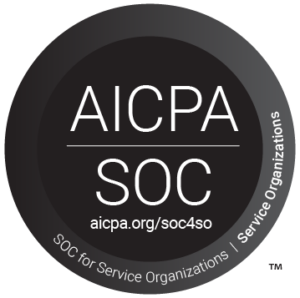Safeguarding Your Organization:
A Strategic Approach to Defending Against Phishing Attacks
In today’s digital landscape, where technology plays a pivotal role in business operations, ensuring robust cybersecurity is paramount. As IT leaders, you are well aware of the ever-evolving threat landscape. One of the most insidious threats you face is phishing – a deceptive cyber attack technique that preys on human psychology. In this blog, we delve into the world of phishing, its various forms, and why being well-educated about this threat is an essential component of your organization’s cybersecurity strategy.
According to the FBI, “In a phishing scam, you might receive an email that appears to be from a legitimate business and is asking you to update or verify your personal information by replying to the email or visiting a website. The web address might look similar to one you’ve used before. The email may be convincing enough to get you to take the action requested.
But once you click on that link, you’re sent to a spoofed website that might look nearly identical to the real thing—like your bank or credit card site—and asked to enter sensitive information like passwords, credit card numbers, banking PINs, etc. These fake websites are used solely to steal your information.”
Understanding Phishing
Phishing is a cyber attack method that involves tricking individuals into divulging sensitive information, such as login credentials, credit card numbers, or personal details. Cybercriminals use various tactics, often masquerading as trusted entities like banks, social media platforms, or even colleagues, to manipulate victims into taking action, such as clicking on malicious links or downloading harmful attachments.
Different Types of Phishing
Email Phishing: This is the most common form of phishing, where attackers send seemingly legitimate emails to potential victims. These emails often contain malicious links or attachments that can lead to malware installation or credential theft.
Spear Phishing: Unlike generic email phishing, spear phishing is highly targeted. Attackers research their victims and craft personalized messages that appear credible and relevant to the recipient. This type of attack requires a deep understanding of the victim’s interests and activities.
Whaling: Whaling targets high-profile individuals like CEOs and other senior executives. Attackers seek to exploit their authority and access by sending convincing emails that request sensitive information or financial transactions.
Smishing: In this variant, attackers use SMS or text messages to deceive victims into clicking on malicious links or revealing personal information. These messages often leverage urgency to elicit quick responses.
Vishing: Vishing involves phone calls where attackers impersonate trusted entities, aiming to extract sensitive information over voice conversations. These attacks can be particularly convincing due to the human interaction involved.
The Importance of Phishing Education
Being well-educated about phishing is crucial for IT leaders like you, for several reasons:
Risk Mitigation: Educated employees are the first line of defense against phishing attacks. When your team can identify suspicious emails, links, or requests, the risk of a successful attack decreases significantly.
Protecting Sensitive Data: As decision-makers and influencers, you have access to critical organizational information. Falling victim to a phishing attack could result in data breaches, financial losses, and reputational damage.
Preserving Business Continuity: Phishing attacks can disrupt operations, cause downtime, and lead to financial setbacks. By training your team, you contribute to the uninterrupted flow of business.
Regulatory Compliance: Depending on your industry, you might be subject to data protection regulations. Falling victim to a phishing attack could lead to non-compliance, resulting in fines and legal consequences.
Empowering Your Team
To effectively combat phishing, consider implementing the following strategies:
Regular Training: Conduct ongoing phishing awareness training for all employees. Simulated phishing exercises can help reinforce good practices.
Multi-Factor Authentication (MFA): Encourage the use of MFA wherever possible. This adds an extra layer of security, making it harder for attackers to gain unauthorized access.
Robust Email Filters: Invest in advanced email filtering solutions to identify and quarantine suspicious emails before they reach employees’ inboxes.
Encourage Reporting: Create a culture where employees are comfortable reporting potential phishing attempts. Timely reporting can help prevent attacks from escalating.
By understanding the intricacies of phishing and its various forms, you’re arming yourself with the knowledge needed to protect your organization and its valuable assets. As visionary leaders, your role extends beyond technical expertise; it encompasses the strategic defense of your company’s digital future. Through education, vigilance, and proactive measures, you can fortify your organization’s cybersecurity defenses and lead the charge against the ever-evolving threat of phishing attacks.





